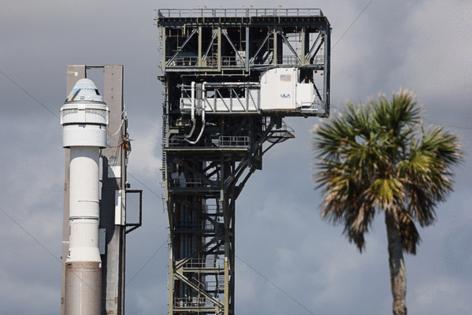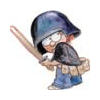Why did Boeing Starliner scrub and when will it launch?
Published in News & Features
A pair of NASA astronauts were ready to go, but a single valve caused a scrub of their ride on Boeing’s CST-100 Starliner on Monday night. The next shot to fly won’t be until Friday but could be delayed further.
“I know everybody was eager to see a launch,” said NASA’s Ken Bowersox, associate administrator of the Space Operations Mission Directorate during a Monday night news conference after the scrub. ” … But all I want to say first is that good things are worth waiting for, and we’ll get a chance to see that rocket and spacecraft lift off the pad here soon.”
Butch Wilmore and Suni Williams were strapped into Starliner sitting atop a United Launch Alliance Atlas V rocket at Cape Canaveral Space Force Station but with just over two hours before the planned liftoff, teams called off the launch attempt.
The reason was a technical issue with a valve within the upper Centaur stage on ULA’s rocket designed to regulate pressure on a liquid oxygen tank.
Teams at the pad reported unexpected sounds from the rocket after NASA’s astronauts had already entered the spacecraft.
“We saw the self-regulating valve on the (liquid oxygen) side had a bit of a buzz and so it was moving in a strange behavior,” said NASA Commercial Crew Program manager Steve Stich. “The flight rules had been laid out for this flight ahead of time with the crew at the launch pad. The proper action was to take the scrub and the United Launch Alliance team did a great job of assessing the data, talking through various options and put us into a scrub condition.”
ULA President and CEO Tory Bruno said the decision to scrub was more about flight rules in place vs. the actual problem.
“Our philosophy is we don’t change the fueled state of the vehicle when the crew is present,” he said. “You can do it otherwise from that, and other people do, but that’s our philosophy. So we built our flight rules around that.”
He noted the issue was something they had seen before on ULA rockets, and had humans not been on board, the fix in place was a simple one.
“It’s not dissimilar to many other valves like that, and you have one in your home on your hot water tank that’s not all that different,” he said. “Every now and again in rare occasions, a valve like that can get into a position where it’s just off the seat. Its temperature, its stiffness, everything is just right and it’ll flutter or it’ll buzz in this case, in cycle.”
...continued
©2024 Orlando Sentinel. Visit at orlandosentinel.com. Distributed by Tribune Content Agency, LLC.







Comments